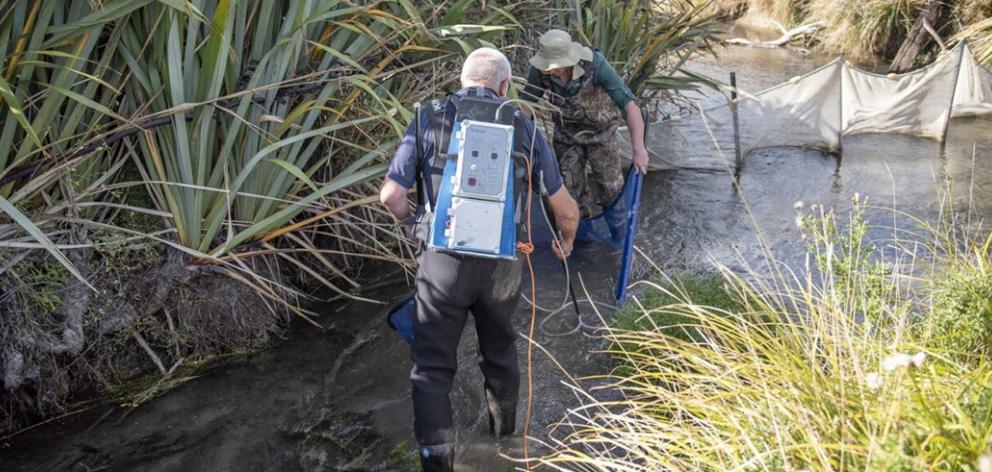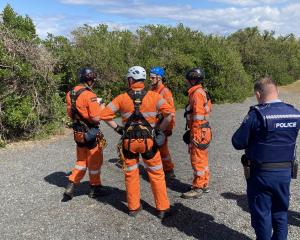
The brown trout and eels were removed from the stream at Haldon Pastures Farm and released downstream of an underwater electric barrier which protects the mudfish habitat.
The solar-powered “fish fence”, developed by American company Smith-Root, was turned on in 2021. It is thought to be the first of its kind to be used in the Southern Hemisphere.
It consists of three underwater iron structures, which send out electric pulses to prevent trout moving upstream.
This has increased the length of the mudfish habitat from about 800m to 8km.
The effort is part of a wider project to protect the “nationally critical” endangered species.
It is a joint effort between Environment Canterbury, Department of Conservation, North Canterbury Fish & Game, Fonterra, and landowner John Grigg.
An electric fishing method was used to capture the fish, which were put into buckets, measured, and safely relocated.

ECan cultural land management adviser Steve Carrick said the project has benefited from a joint agency approach, low water levels and improved access.
“Of course, none of this work would be possible without the landowner’s co-operation. John’s willingness to give us access to the property and his support of these preservation initiatives is invaluable,” said Carrick.
Grigg was impressed with the project’s “outside the box” approach to protecting the mudfish.
“It’s great to be involved in something so innovative and totally different. Often, you do have to think outside the square to protect nature,” Grigg said.













